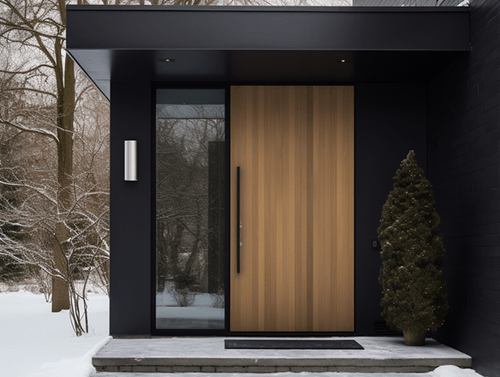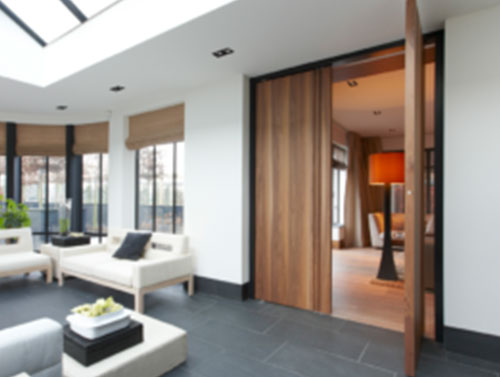Renovating an existing home or going through the process of building your dream home is indeed very exciting for any homeowner. When remodeling or building a new home, choosing the exterior door is an important part of the whole process. Deciding to purchase a new entrance door is not a simple task and it often takes great consideration to finalize the price point, quality, material, design, and timing for the project.
Renovating an existing home or going through the process of building your dream home is indeed very exciting for any homeowner. When remodeling or building a new home, choosing the exterior door is an important part of the whole process. Deciding to purchase a new entrance door is not a simple task and it often takes great consideration to finalize the price point, quality, material, design, and timing for the project.
Moreover, there are many technical terms for the different parts of the door, and if you don’t know them, these strange names might make things confusing. In this article you can learn about the common parts of a door to make it easier to talk to building professionals.
Parts of an Entrance Door
- Door Frame

A door frame supports the door and is commonly made from wood, aluminum, or steel. Side jambs, door head, and mulls are the parts that make up the frame.
- Door Head or Header
Door head or header is the horizontal part at the top of the door, sometimes mistakenly called the top jamb.
- Door Jamb
Door jambs are the interior vertical sides of the frame. The word “jamb” comes from the French word “jambe” which means leg, and that’s the reason door jambs are sometimes called door legs.
- Doorstop
A doorstop is a strip of wood that is fitted to the door frame to stop the door from swinging beyond its closed position.
- Casing
Casing is a decorative trim that is placed over the door frame to hide the gap that commonly occurs between the door frame and the wall.
- Sidelight
Sidelights are fixed windows that are attached to the sides of an entrance door. Not only they are architecturally beautiful, but they also invite in more natural light to your home.
- Transoms
A transom is a fixed glass window installed above the door and sidelights. Transoms allow in plenty of natural light to help brighten your entryway.
- Sill
A sill of a door is the bottom part of the frame structure that sits under the door jamb and against the floor.
- Threshold
A threshold is the sloped cross piece that extends across the bottom of the door. It covers the entrance door’s sill and provides a protective element. Threshold is slightly raised to help keep wind and water out of your home.
- Brickmould
Brickmould is a type of trim that is applied to the exterior part of the home and helps to hide the gap between the door frame and the wall.
- Weatherstripping
Weatherstripping is a flexible material that goes around the door jambs and header to provide an airtight seal. It protects your home from wind and water, pests, and other unwanted intrusions.
- Door Sweep
A door sweep is a narrow strip located at the very bottom of an entrance door and lies flat against the threshold. It is designed to seal your home against air, water, and pests.
- Auto-Seal
Auto-seal is an automatic dropdown door seal made out of high-grade silicon lip. It drops down automatically when a door closes, to form a secure seal. I addition to sealing your home against air, water, and pests, auto-seals provide acoustic insulation up to 48 db.
- Door Panel
The door panel or door slab is the part of the door that swings to open and close. Full door panels are often divided up into smaller panels, which are set between the stiles, rails, and mullions.
- Stile
Stiles are the side vertical sections of the door itself located on the outside edge of both sides of the door. The lock, latches and hinges are all located on the stiles. The stile on the hinge side is known as the “hinge stile” while the one on the opposite side is called the “lock stile”.
- Rail
Rails are the horizontal sections on a door panel. The top and bottom rail along with the stiles enclose the panels that make up the surface of the door. Middle rails are used to divide your door into sections.
- Mullion
A mullion is where two units are joined together. If the door is divided into four sections, each containing one panel, mullions divide the door vertically down the middle, intersecting the lock rail.
- Hinge
A hinge is a piece of hardware that the door swings on. One part of the hinge is screwed to the jamb and the other to the side of the door. Several types of hinges are used on doors, such as barrel hinges, concealed hinges, and pivot hinges.
- Astragal
An astragal is a piece of hardware that is used on double doors to seal the gap between the doors when they are closed. Astragal is attached to the inactive door panel, or the panel that is not typically used for entry and exit.
- Flush Bolt
When you have a set of double doors, it’s very common for one of the doors to remain inactive while the other one opens and closes against it, meeting in the middle of the doorway. Flush bolts are recessed into the top and bottom of the inactive door edge and slide upward or downward into the jamb or threshold to keep the door secure and closed.
- Lockset
Lockset refers to the locking mechanism as a whole which includes the locks, latches, strike plates, handles, knobs, grip set and any other hardware.
- Entry Handle set
An entry handle set is a door hardware that operated with a key cylinder on the exterior side of the door and a push or turn lock button on the interior. A handle, knob, lever, or thumb press are the components that unlatch the door.
- Latch
A door latch is a shaft that extends from the edge of a door panel and into the door frame securing the panel in place. When the handle is turned, the latch retracts allowing the door to be opened.
- Strike Plate
A strike plate adds strength to door frames by helping to prevent unwanted, forced entry. It is located on the door jamb where the bolt and hole for the bolt meet.
- Deadbolt
A deadbolt is a shaft that protrudes from the side of the door panel into the door frame to keep the panel secure. A deadbolt is a separate mechanism than the latch inside of a door handle. This secondary lock helps provide an extra layer of security for your home.
- Multipoint Lock System
A multipoint locking system is a type of door hardware that locks at different points in the frame; typically the top, middle and bottom. Instead of one deadbolt, it has three or more depending on the door height. The extra deadbolts bring additional security since it takes more force to break through a door that is locked at multiple different points. These multiple points on the locking system mean that there is less pressure on the hinges of the door compared to single-bolt locks. Because the weight of the door is spread across three mechanisms, the door itself lasts longer.






